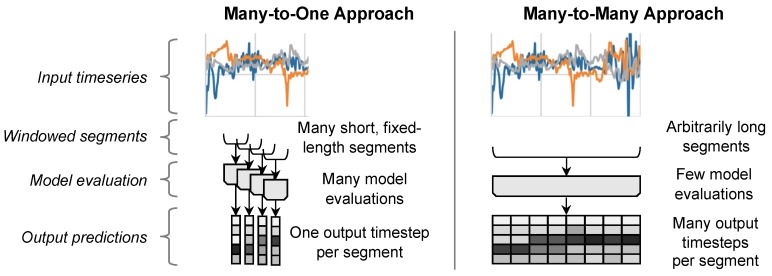Figure 1.
In a typical many-to-one approach (left) an input is first divided into fixed-length overlapping windows, then a model processes each window individually, generating a class prediction for each one, and finally the predictions are concatenated into an output time series. In a many-to-many approach (right), the entire output time series is generated with a single model evaluation.

